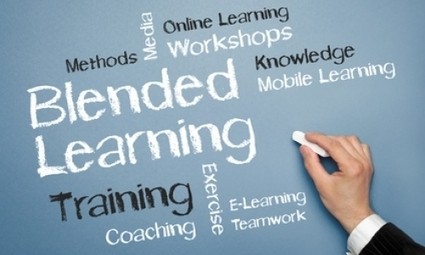Following are a few questions from a webinar we did with online learning provider SevenStar.
Mindy Lewis: I would like your opinion on private schools providing the devices vs. the students bringing their own devices.
There are increasing benefits to a Bring Your Own Device (BYOD) environment for private schools. You could pick a browser or two that you’ll optimize for (e.g., Safari and Chrome) and let folks know if you plan to make extensive use of Flash-based content (which would discourage iPad usage).
Jason Haas: Will adaptive learning and platforms will take hold and grow?
Currently, just 2-3 platforms offer adaptive technology. Here’s a list of
10 adaptive web applications but it’s fair to say that they generally don’t integrate easily with learning management systems (here’s a
list of 20). Results from adaptive assessment should flow automagically into a super-gradebook to meet up with other formative assessments and teacher observations but, alas, nobody does that well.
Wayne Knode: What are the qualities to look for when choosing an online learning company?
Following are a few questions to ask:
-
What standards are the courses based on? (less important for private schools, but you’ll want to know what they were aiming for)
-
Do courses run on a proprietary learning management system? Will they run on our LMS?
-
What is the level of student engagement?
-
Are effective teachers available for online delivery? Are they certified in my state (if applicable/of interest)?
-
If delivered with instruction, are there rolling/frequent start dates?
-
What form of assessments are embedded in the course?
-
Can we add our own content?
-
What kinds of instructional supports are available?
The Summit central office team and a group of Bay Area community organization offer a wide range of short courses (expeditions) from a few days to 7 days and they rotate through the network for a total of 8 weeks of alternative programming. For more, see
Summit Denali: 12 Components of an NGLC Winning Design.
Christopher Alcala: What about course materials such as Textbooks? Are there digital options or would there be a need to purchase the books for the class?
Following are three options to consider:
-
Pick a comprehensive platform with content and an learning management system; here’s a
list of 10. These are easy manage and monitor but you may be disappointed in the level of student engagement and flexibility for teachers.
-
In short, don’t’ pay for flat and sequential content (i.e., textbooks online). You should only pay for high engagement content with embedded assessments with flexible and/or adaptive use options. Check out all the OER before you buy.
Mary Daley: What about online courses for students in grades 3-8?
Through fifth or sixth grade, most online providers address the learning coach (parents/teacher) and assume they need a good deal of support. By middle grades, virtual school operators assume students have developed the self management to take at least some courses online. Most students will benefit from a supportive learning environment and mixed learning modalities (i.e., blended learning).
To learn more about how one private school expanded options and extended reach see a
Curriculum Associates and Dreambox are Getting Smart Advocacy Partners. Tom is a director at iNACOL.






0 Comments
Leave a Comment
Your email address will not be published. All fields are required.